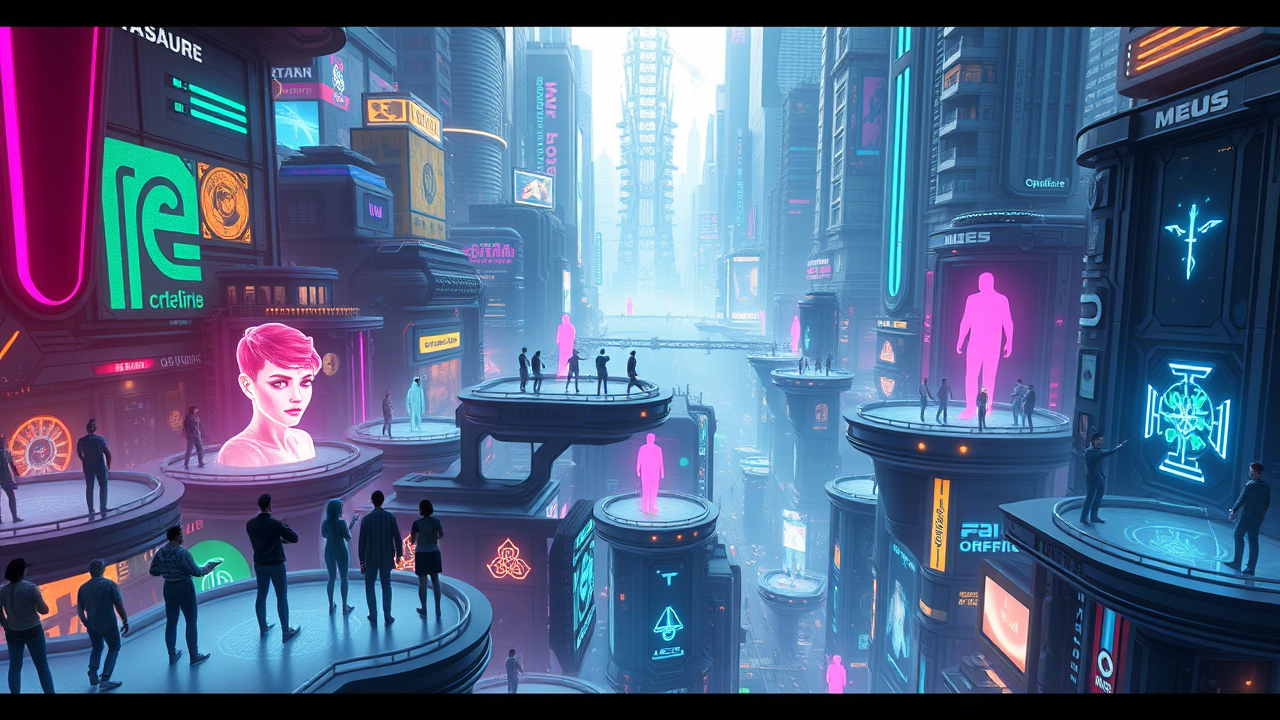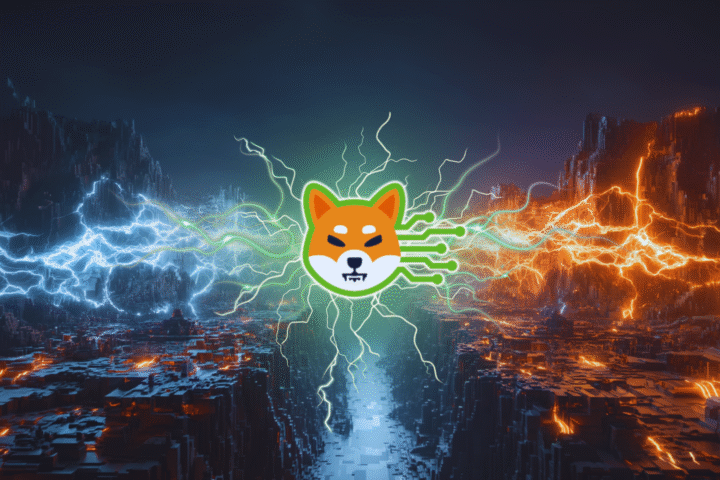The metaverse is a network of virtual worlds where people connect, work, and play through digital avatars. Think of it as an immersive evolution of the internet, driven by technologies like virtual reality (VR), augmented reality (AR), and blockchain. Once a sci-fi concept popularized by Neal Stephenson’s 1992 novel Snow Crash, it’s now taking shape through platforms like Meta’s Horizon Worlds, Roblox, and Decentraland.
Recently, interest in the Metaverse has exploded. Better VR technology, digital ownership through blockchain (like NFTs), and the shift to remote work have made virtual spaces more useful and appealing. Big companies are investing in it, seeing it as the future of online interaction, entertainment, and business.
What is the Metaverse?
The Metaverse is a digital space where people can interact in real-time using avatars — virtual versions of themselves. Unlike regular websites or apps, the Metaverse feels more immersive, allowing users to explore 3D environments, attend virtual events, work remotely, and even own digital assets. Instead of just scrolling through content, you can step inside and experience it.
The Evolution of Virtual Worlds
The idea of virtual worlds isn’t new. Early online spaces like Second Life (2003) allowed users to create digital avatars, socialize, and buy virtual property. Multiplayer games like World of Warcraft and Roblox introduced interactive environments where people could connect and collaborate.
Today’s Metaverse is more advanced, blending different virtual worlds into a more connected experience. Unlike older platforms, it’s not just about gaming—it’s expanding into work, education, shopping, and even healthcare.
Key Components of the Metaverse
The Metaverse is built on several important technologies:
- Virtual Reality (VR): Headsets like the Meta Quest allow users to step into fully immersive 3D worlds.
- Augmented Reality (AR): AR overlays digital elements onto the real world, like Pokémon GO or smart glasses.
- Blockchain: This technology enables secure digital ownership of assets like virtual land, NFTs, and cryptocurrencies.
- Artificial Intelligence (AI): AI powers virtual assistants, realistic avatars, and smarter digital interactions.
- Social Interaction: Unlike traditional websites, the Metaverse is built for real-time social experiences—whether it’s meeting in a virtual office or attending a concert in a digital stadium.
How is the Metaverse Different from Traditional Digital Experiences?
Unlike regular websites or social media, where you browse content on a screen, the Metaverse is immersive—you’re inside the experience. Instead of watching a concert on YouTube, you can attend it as an avatar. Instead of a Zoom call, you can meet in a virtual office that feels more like real life.
The Metaverse is still evolving, but it’s changing how we connect, work, and create. Next, we’ll explore how it’s already being used in different industries and what the future might hold.
The Building Blocks of the Metaverse
The Metaverse is made up of different technologies and systems that work together to create immersive digital experiences. These key building blocks shape how people interact, earn, and connect in virtual worlds.
The Economy: Earning and Owning in Virtual Worlds
Unlike traditional online spaces, the Metaverse has its own economy powered by digital assets:
- Digital Currencies: Cryptocurrencies like Ethereum are used for transactions in many virtual worlds.
- NFTs (Non-Fungible Tokens): These allow users to own unique digital items like art, clothing for avatars, or even virtual real estate.
- Virtual Marketplaces: Just like online stores, virtual worlds have marketplaces where users can buy, sell, and trade digital goods.
Social Interaction: Connecting in New Ways
The Metaverse is designed for real-time social engagement:
- Avatars: Users create digital versions of themselves to navigate virtual worlds.
- Virtual Events: People can attend concerts, conferences, or even birthday parties in immersive settings.
- Communities: Just like social media, the Metaverse allows people to form groups based on interests, whether for gaming, business, or social causes.
Infrastructure: Powering the Metaverse
For the Metaverse to work smoothly, it needs strong technology behind the scenes:
- Cloud Computing: Allows users to access virtual worlds from anywhere without needing expensive hardware.
- 5G & High-Speed Internet: Fast internet is essential for reducing lag and making interactions seamless.
With these building blocks in place, the Metaverse is becoming more than just a concept—it’s a growing digital space where people can work, play, and connect in new ways. Next, we’ll explore how different industries are already using it today.
Real-World Applications and Potential of the Metaverse
The Metaverse isn’t just a futuristic idea—it’s already being used in different industries. From gaming and work to education and shopping, virtual worlds are changing how people engage with digital experiences.
Entertainment and Gaming: Immersive Digital Worlds
Gaming is leading the way in Metaverse development. Platforms like:
- Roblox – Lets users create, play, and even make money from their own games.
- Fortnite – Goes beyond gaming by hosting virtual concerts and events with millions of attendees.
- Meta’s Horizon Worlds – A social VR platform where people can meet, create, and explore together.
Work and Collaboration: The Future of Remote Work
Instead of video calls, companies are using virtual offices where employees can meet as avatars.
- VR workspaces like Meta’s Horizon Workrooms or Microsoft Mesh create a digital office environment.
- Remote collaboration tools let teams brainstorm, hold meetings, and work together in immersive 3D spaces.
As remote work grows, the Metaverse could make virtual offices feel more like real ones—helping teams stay connected, even from different locations.
Education and Training: Learning in Virtual Environments
The Metaverse is making learning more engaging with:
- Virtual classrooms where students can interact with lessons instead of just reading about them.
- Simulations for training in fields like medicine, aviation, and engineering.
- Skill development through hands-on experiences, such as practicing surgery in VR before operating on real patients.
This makes education more accessible and effective, allowing people to learn by doing rather than just watching.
Commerce and Retail: The Rise of Virtual Shopping
Brands are creating digital storefronts and experiences, allowing users to:
- Shop in virtual stores where they can browse products in 3D.
- Try on digital fashion for their avatars in platforms like Decentraland or The Sandbox.
- Engage with brands through interactive experiences, such as Nike’s Nikeland in Roblox.
With digital goods and virtual shopping growing, the Metaverse is opening new opportunities for businesses and consumers alike.
Healthcare and Therapy: Transforming Medicine with Virtual Solutions
- VR for Mental Health: Virtual reality is being used for therapy sessions, helping people with anxiety, PTSD, and phobias by creating controlled environments where they can gradually face their fears.
- Physical Therapy & Rehabilitation: Patients recovering from injuries can use VR for guided physical therapy exercises, making recovery more engaging and effective.
- Telemedicine & Virtual Consultations: Doctors can meet with patients in virtual clinics, allowing for more personal and interactive remote healthcare experiences beyond standard video calls.
These innovations make healthcare more accessible, providing new treatment options for people regardless of location.
The Future of the Metaverse
The Metaverse is still in its early stages, but as technology advances, it will become even more immersive and integrated into daily life. Here’s what the future might hold:
Smarter AI and Hyper-Realistic Experiences
- AI-driven interactions – Virtual assistants and NPCs (non-player characters) in the Metaverse will become more lifelike, responding naturally to users in real time.
- Hyper-realistic environments – Advances in graphics, haptic feedback (touch sensations), and VR technology will make virtual worlds feel almost indistinguishable from reality.
Who’s Shaping the Metaverse?
- Big Tech Giants – Companies like Meta, Microsoft, Apple, and Google are investing heavily in VR, AR, and AI to build the infrastructure for future virtual worlds.
- Emerging Startups – Newer companies are innovating in areas like blockchain-based virtual economies, decentralized platforms, and AI-powered virtual experiences.
What Could the Metaverse Look Like in 10 Years?
While predictions vary, some possible developments include:
- A fully interconnected Metaverse where different virtual worlds are linked, allowing users to move seamlessly between them.
- More real-world applications beyond gaming and socializing, including widespread use in business, healthcare, and education.
- Improved accessibility with cheaper, more user-friendly VR and AR devices, making the Metaverse available to more people.
While the Metaverse is still evolving, one thing is clear—it has the potential to reshape how we work, play, learn, and interact in the digital age.
Conclusion: The Promise and Pitfalls of the Metaverse
The Metaverse has the potential to change how we live, work, and socialize. It offers exciting opportunities—immersive entertainment, new ways to collaborate, better access to education, and even advancements in healthcare. It could make digital interactions more engaging and open up economic possibilities through virtual jobs and digital ownership.
However, challenges remain. Privacy concerns, digital addiction, and the risk of big tech companies controlling virtual spaces are real issues. Not everyone has access to the expensive technology needed, and security risks in virtual economies are still being addressed.
Stay Curious and Stay Informed
The Metaverse is still growing, and its future is uncertain. It could become a revolutionary digital space or face major roadblocks. The best way to prepare is to stay informed, explore responsibly, and think critically about its impact. Whether you’re a gamer, a professional, or just curious, learning about virtual worlds now can help you navigate what comes next.
Read More
- ‘TRUMP’ Trademark Filing Hints at Metaverse, NFT Plans
- SHIB: The Metaverse
- Alibaba Lays Off Dozens From Metaverse Unit Amid AI Pivot
Michaela has no crypto positions and does not hold any crypto assets. This article is provided for informational purposes only and should not be construed as financial advice. The Shib Magazine and The Shib Daily are the official media and publications of the Shiba Inu cryptocurrency project. Readers are encouraged to conduct their own research and consult with a qualified financial adviser before making any investment decisions.










